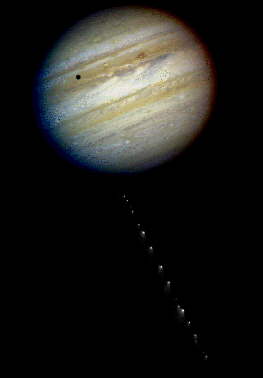Anne's Quiz #1
The Solar System
(image to right is from the Hubble Space Telescope, Jupiter with the approaching comet fragments, July 1994 [credits: H.A. Weaver, T.E. Smith (Space Telescope Science Institute) and J.T. Trauger, R.W. Evans (Jet Propulsion Laboratory), and NASA] -- more info on this spectacular event is included in Impact Jupiter by David Levy, one of the discoverers of the comet. I had the pleasure of working with some of the people doing calculations of the impacts.)
Are you a budding astronomer? Let’s find out!

